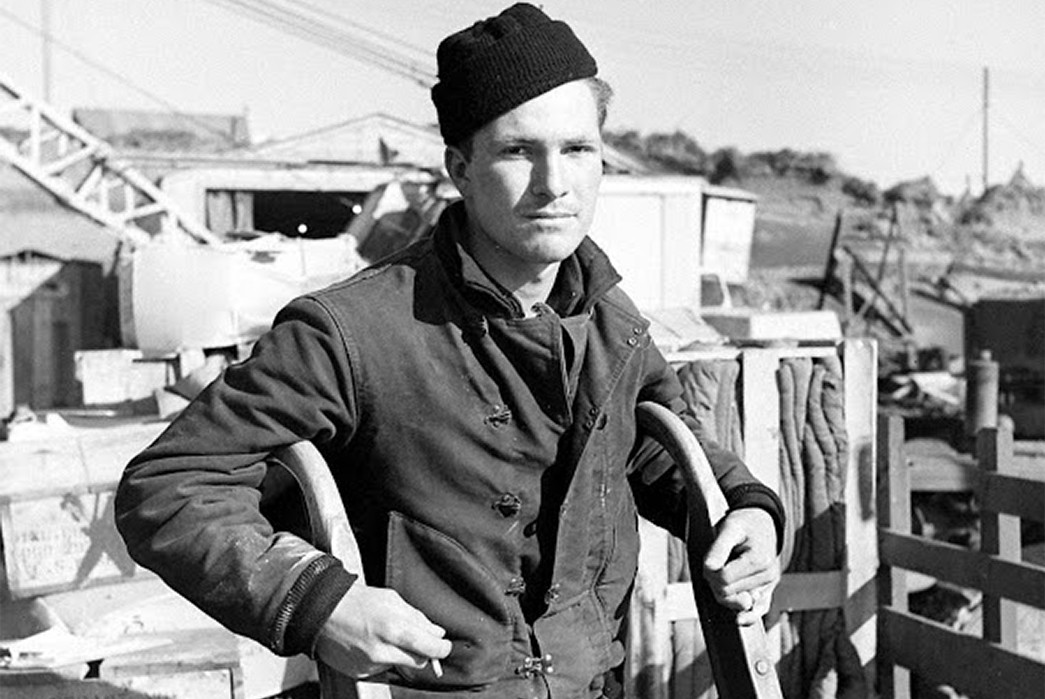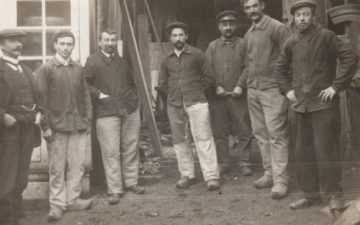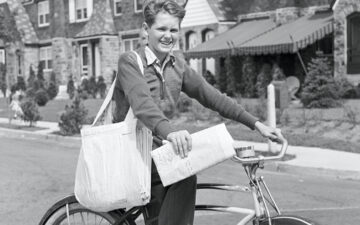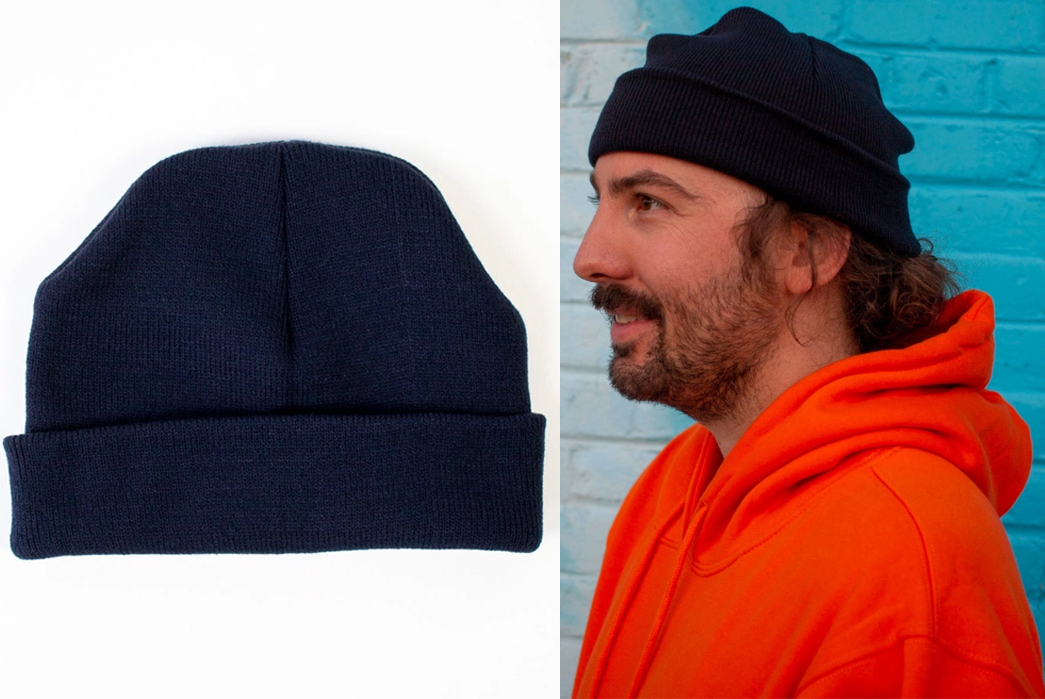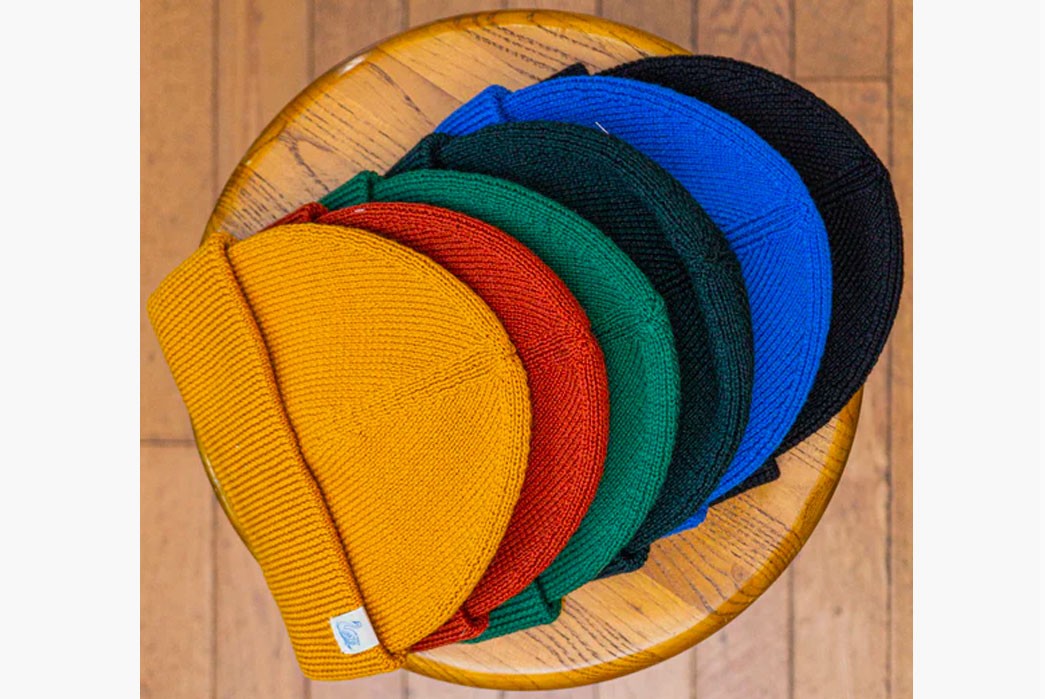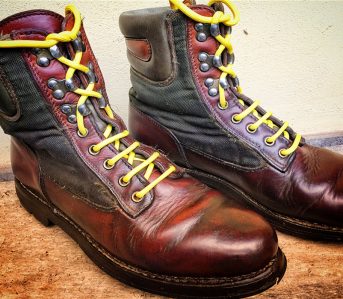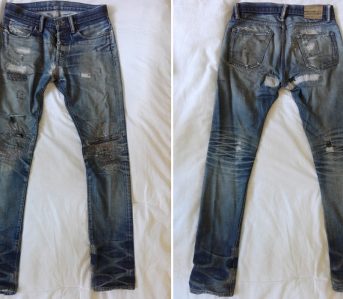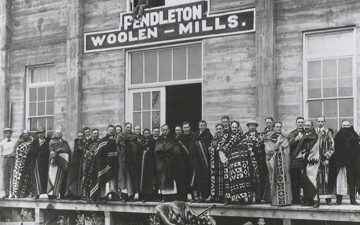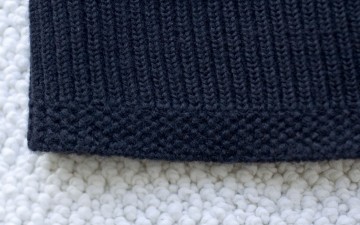The watch cap. The knit cap. The skullcap. The beanie. Whatever the name you choose, tracking down the history of this now-ubiquitous piece of headgear may prove frustrating. Every cold part of the world that needed to keep their ears and head warm while at work and play invented some variant of the watch cap.
The history may not be straightforward, but everyone knows the end of this story. This cap becomes one of the most worn and (as editor, David Shuck reminded me) frequently lost accessories in the modern wardrobe.
What is a Watch Cap?
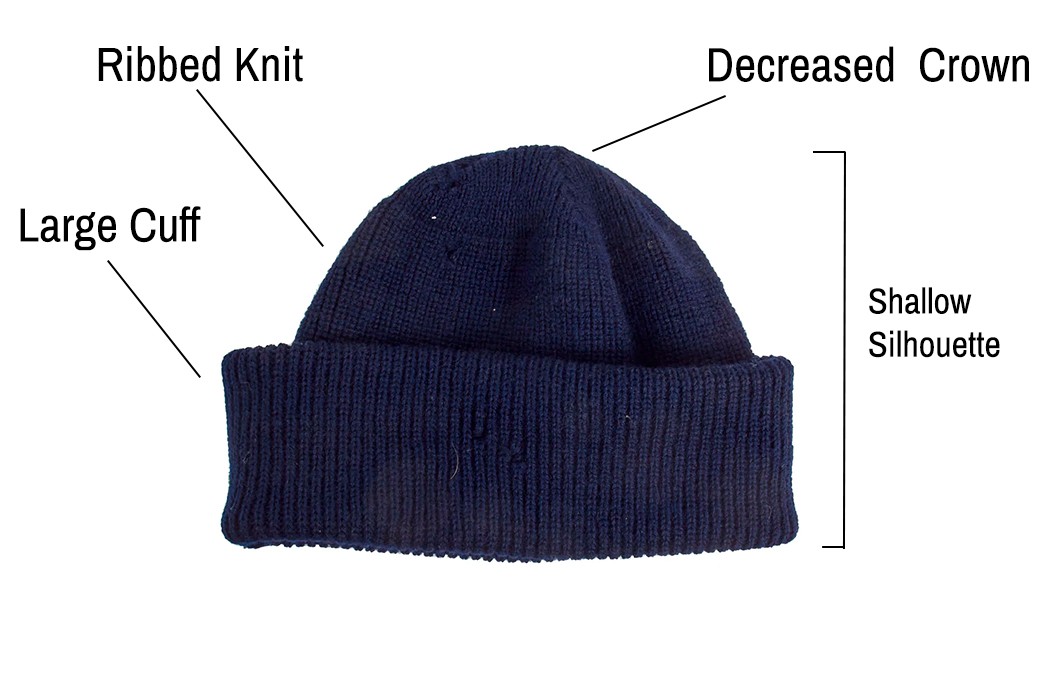
Image of Original USN Watch Cap via International Military Antiques.
A watch cap is a knitted cap with a large folded cuff, typically knitted from wool or cotton. The silhouette was standardized by the U.S. Navy in the early-to-mid 20th Century and remains the archetypal watch cap to this day.
History of the Watch Cap
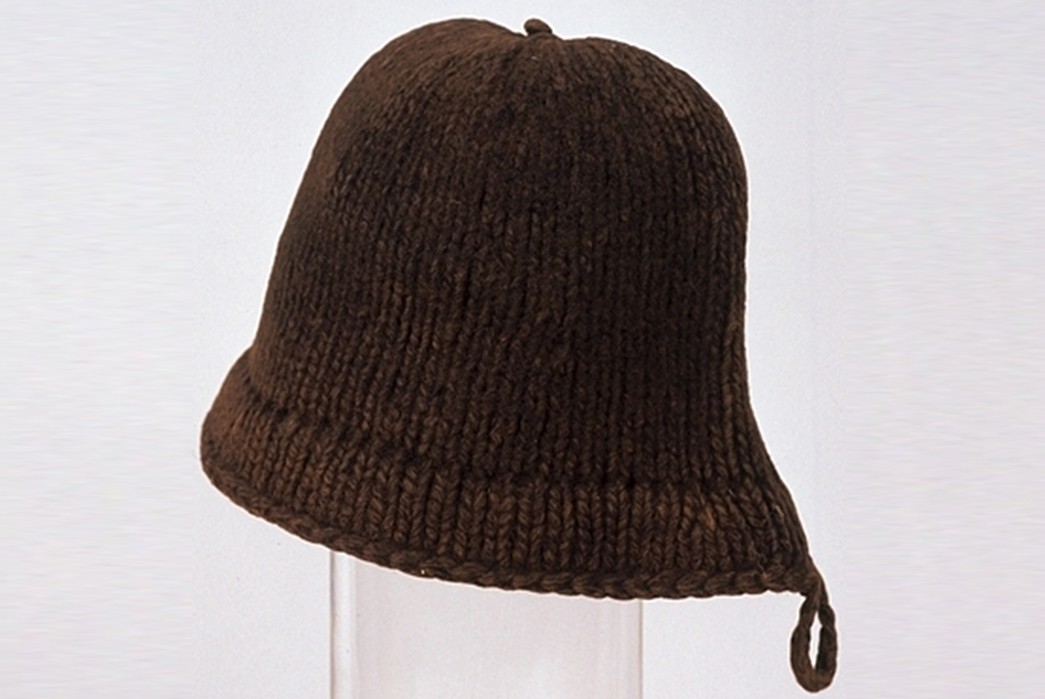
Monmouth Cap from the 16th century. Image via the Monmouth Museum.
The history of the watch cap is synonymous with the history of knitted caps in general. A fair number of sources believe the history of the knitted cap began in Monmouth, Wales in the mid-1500s. However, other sources believe the invention of the pom-pom was a sign of cap-making in Norway that pre-dated the invention of knitting, and therefore the “Monmouth Cap”.
But like the various famous sweaters in our Ugly Christmas Sweater article, it is quite possible that both these cold regions developed their own logical answer to their environment. A snug-fitting warm cap to keep out the elements. If one is to believe the cap originated in either Great Britain or Scandinavia, it makes sense that it would be associated with durable, practical workwear. But could the answer be buried even further in the past?
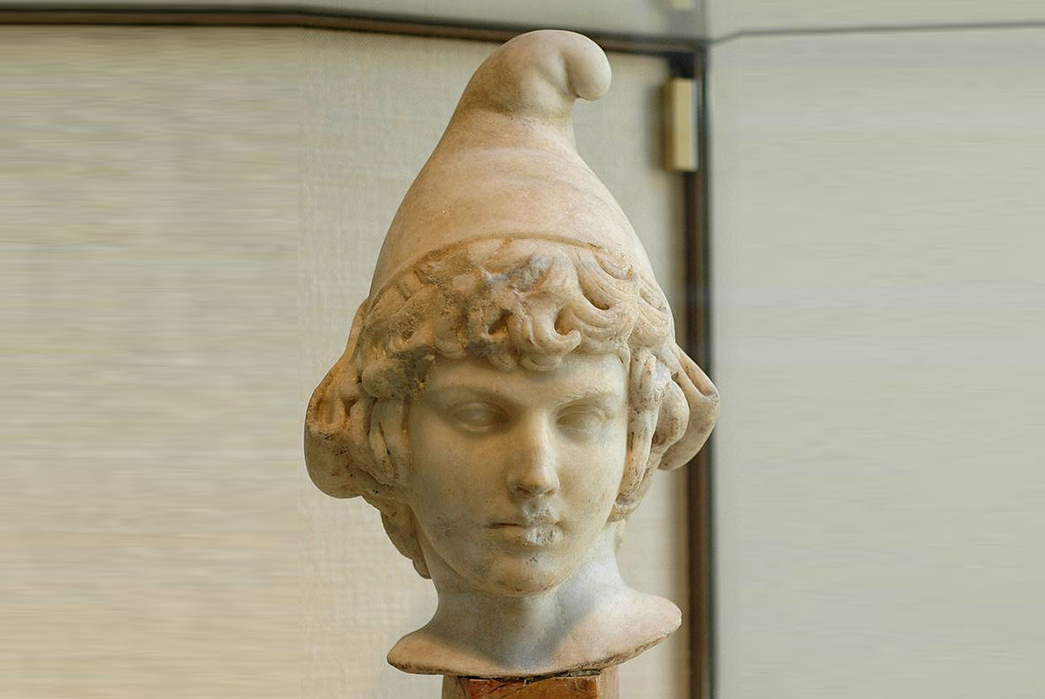
Roman bust wearing a Phrygian Cap. Image via Wikipedia.
The Phrygian Cap has its origins in the Hellenistic period and would come to be worn by freed slaves in ancient Rome. The powerful classical symbolism inherent in this rather silly hat would not be lost on history and in the late 1600s, they would be called “bonnets rouges” and worn by revolutionaries in an early anti-nobility revolt that served as a precursor to the French Revolution. But even though various versions of the knit cap existed throughout Europe, it would be the great colonial powers: France and England who would export their favorite designs to the world.
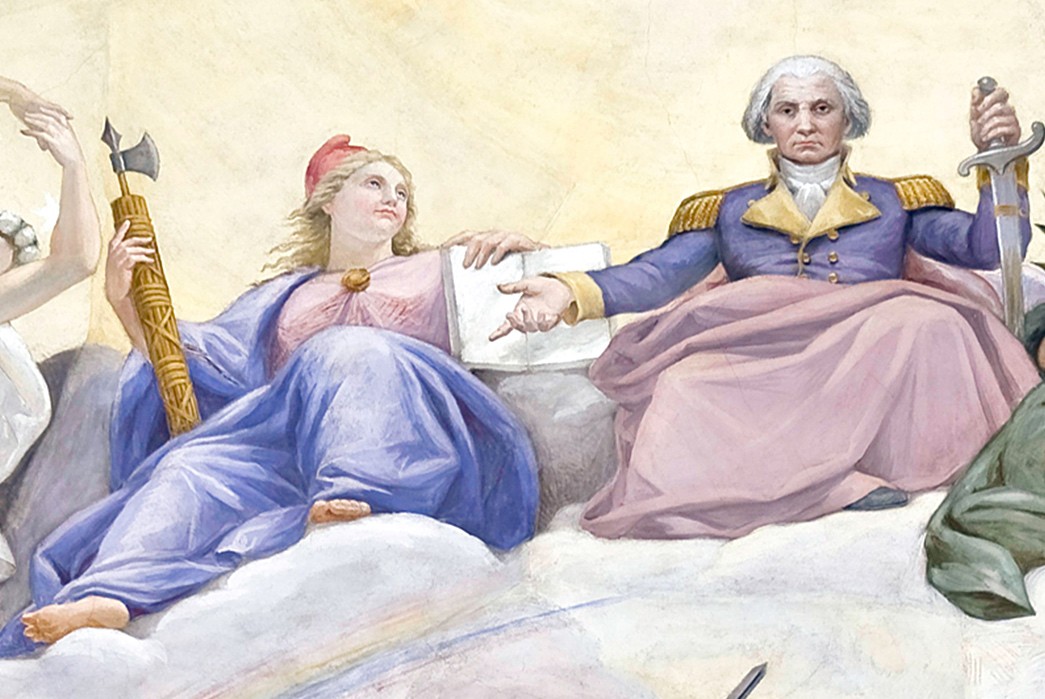
“The Apotheosis of George Washington.” Image via Architect of the Capitol.
The United States Capitol Rotunda features a “liberty cap” on the head of a woman on George Washington’s right in “The Apotheosis of George Washington.” American artist Thomas U. Davis tried many times to include liberty caps throughout the famous works of art in the American capitol, but he was often denied.
The cap’s association with freeing Roman slaves was too radical in pre-Civil War America and other critics thought the cap might too closely resemble Native American headwear to be acceptable in the Capitol. Nearly a hundred years after America’s founding, the caps from the first European settlers remained controversial symbols of liberty.
The Military Connection
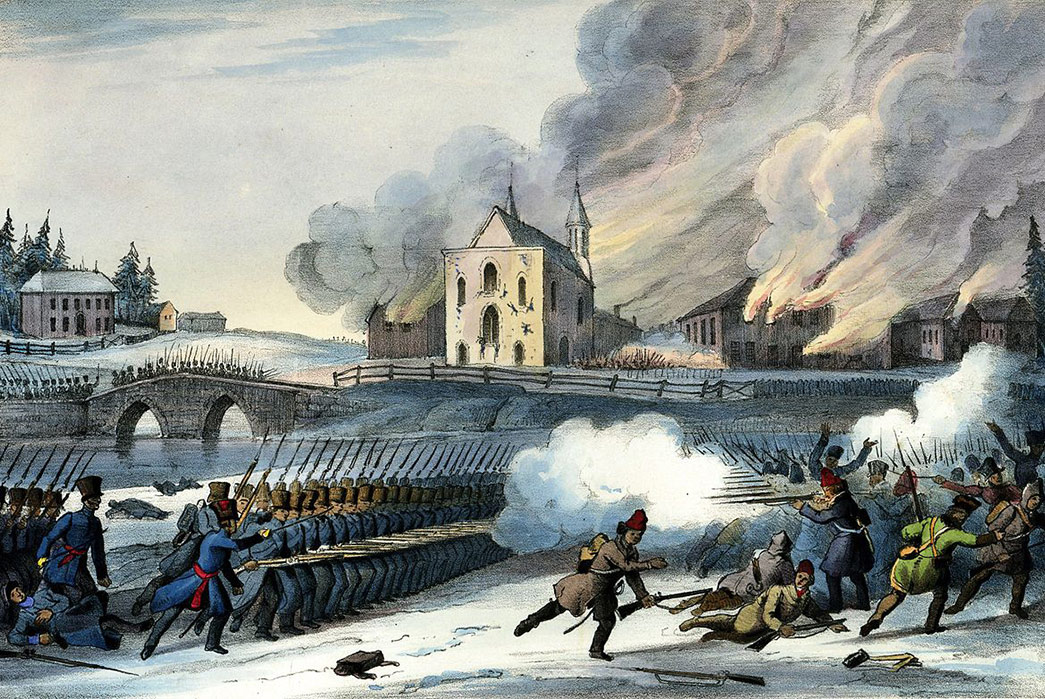
A Saint Eeustache. Image via the Mccord Museum.
Although the knit cap is an incredibly ancient item of clothing, its military connection was indelibly forged from the 1830s to 1850s with several very cold and violent conflicts. The first was the Lower Canada Rebellion, which was fought between French-Canadian patriots and the British Colonial Powers.
Fought in desperately cold conditions, the knit cap would serve a twofold purpose: survival and symbolism. The Québecois patriots adopted the already-famous bonnet rouge as part of their uniform. In French-Canadian, the caps would be called Tuques.
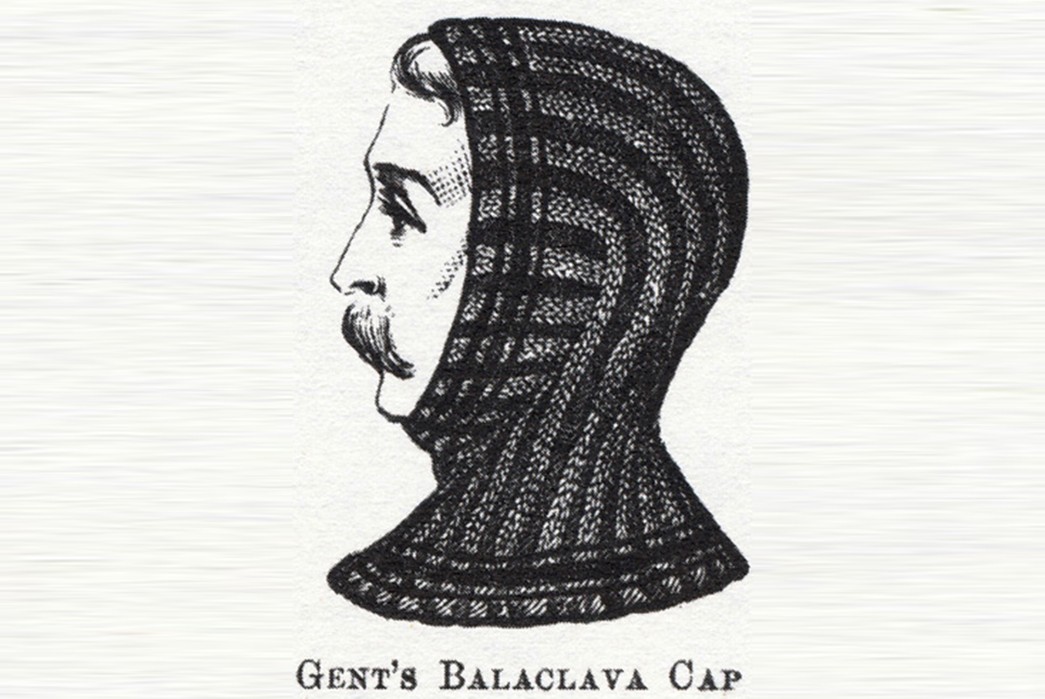
Vintage balaclava design. Image via Pinterest.
The 1854 battle of Balaclava allegedly gives us another important link between the knit cap and the military. In the siege of Sevastopol, which was in turn a part of the Crimean War, these caps were apparently given to British soldiers to keep them protected from the cold.
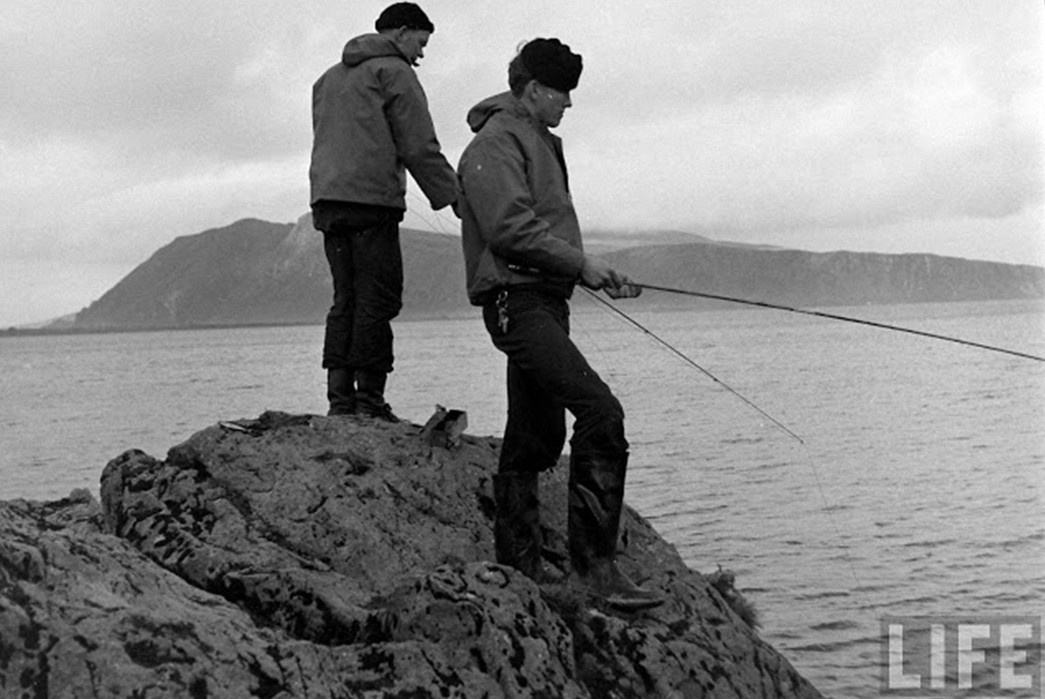
Watch Caps. Image via Life Magazine.
Although it may be sloppy history to jump all the way from the Crimean War to World War II, it may be helpful in terms of fashion. After all, the great majority of knit caps we now see are marketed as “watch caps” have a clear link back to the caps worn by Navy crews while, you know, standing watch, during World War II.
An absolutely incredible set of photos by Life Magazine captures a submarine crew while stationed somewhere bleak and cold in the 1940s.
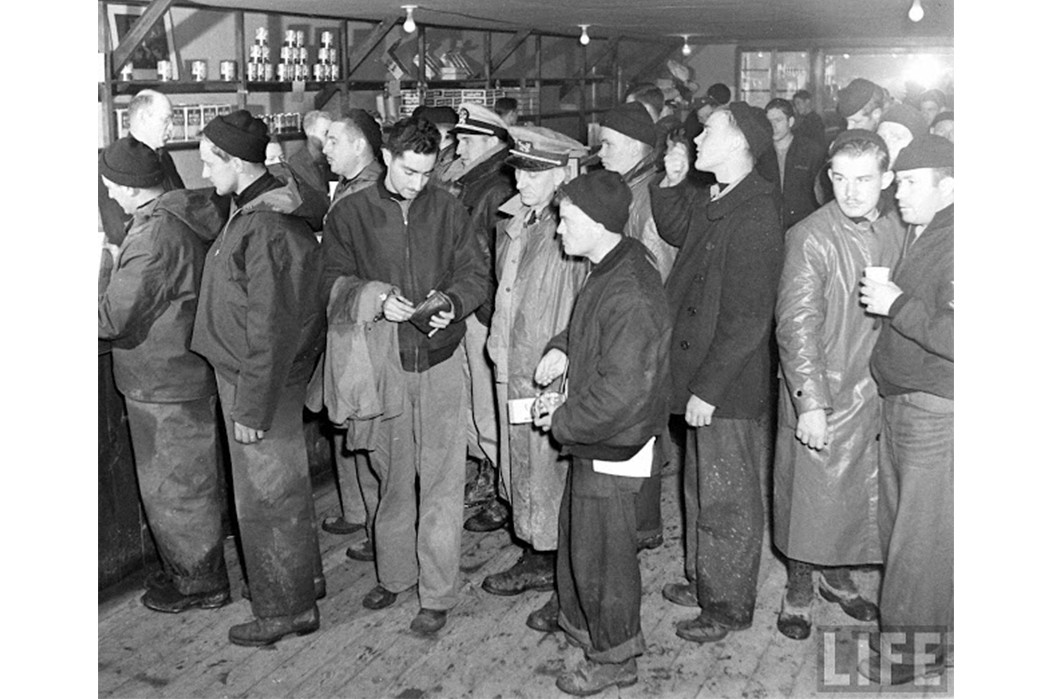
More watch caps than you can shake a stick at. Image via Life Magazine.
These pictures not only show the watch cap out in the wild, so to speak, but worn often as they are worn today. Usually made from a dark navy or black wool and worn rolled up above the ears – a silhouette that unknowingly standardized the Watch Cap silhouette forever. Wearing your beanie high on your head or at a jaunty angle isn’t a modern hipster invention, but a long-standing tradition. Nay personnel were told to keep their ears of out the beanie so that if they were rained on, the wool wouldn’t affect their ears.
Watch Caps in Pop Culture
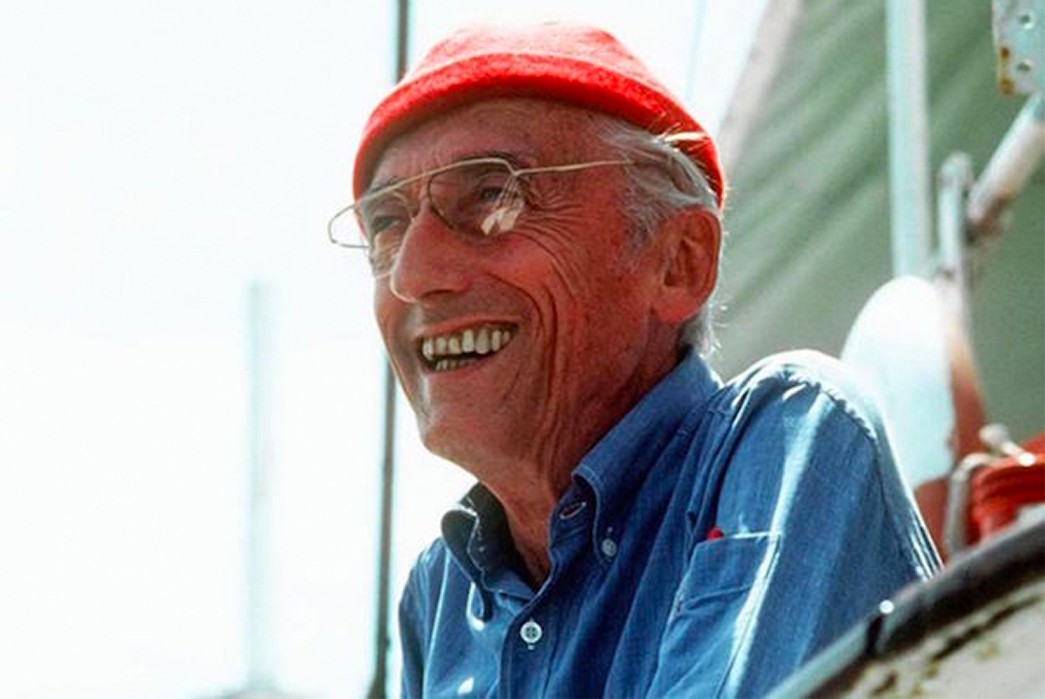
Jacques Cousteau, via Rushkult.
Famous undersea explorer Jacques Cousteau could often be seen in a watch cap throughout the latter half of the twentieth century. Despite his history in the French Navy, he wears not a somber military color, but a bright orangey red, almost reminiscent of the Phrygian Caps of the French Revolution. Regardless of intent, Cousteau further cements the cap’s connection with exploration and adventure.
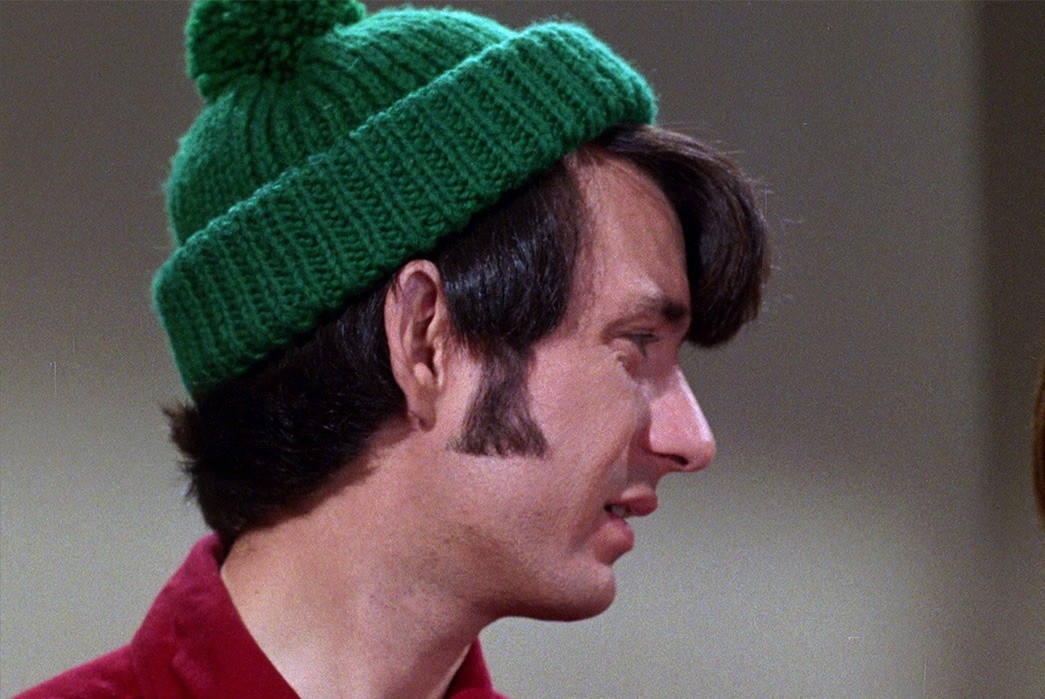
Michael Nesmith. Image via Sunshine Factory.
Among these warriors and adventurers, we must also add Michael Nesmith of The Monkees, who was often seen wearing a beanie with a pom-pom on top. In the two years the band was on TV, from 1966-1968, the watch caps worn by Nesmith served as proof that the hard-wearing hat was no longer just for adventures on the high seas, but could just as easily be worn by any and all.
Watch Caps Today – Materials & Worthwhile Makers
Today, watch caps are widely produced by a range of makers. You can pick up a surplus military watch cap for $15, or buy a high-end U.S. Navy reproduction by a brand like Buzz Rickson’s or The Real McCoy’s. The options are pretty expansive, and to be honest, you’ll likely have to try a few out to find the right one for your head.
Materials
Wool – Wool is the iconic watch cap material. Whether it’s standard, virgin, or merino, wool has insulating properties perfect for keeping your head warm and not hot. If you’re looking for a premium watch cap that will last you years, go for wool.
Cotton – Cotton is another traditional watch cap material. There is evidence of some Naval production contracts of cotton Watch Caps, but cotton isn’t as insulating as wool, and stretches a lot more. If you don’t get on with wool, a decent cotton watch cap will still serve you very well.
Acrylic – A lot of cheaper, more mass-produced watch caps will be made from acrylic – a no-nonsense, artificial fiber that offers high warmth levels and a comfortable feel.
Worthwhile Makers
If you’re interested in standing your own watch, or just watching the world go by, we’ve got the following suggestions for quality, hard-wearing, and responsibly made watch caps below.
Teamster Union Made Watch Cap
If your only connection to the International Brotherhood of Teamsters is falling asleep during the first 90 minutes of The Irishman, think again. The Teamsters are one of the largest labor unions in the United States and their 1.4 million members include not only truck drivers but also construction workers, farm workers, public defenders, zoo keepers, bakers, airline pilots, and, in our case, garment workers that made the beanie you see above.
This no-nonsense beanie is made from 100% acrylic fibers knit in Georgia and cut and sewn by members of the Teamsters Union in California. Whether your workplace is organized or not, it will keep your head warm.
Available for $18 from Heddels Shop.
Buzz Rickson’s U.S.N. Watch Cap BR02243
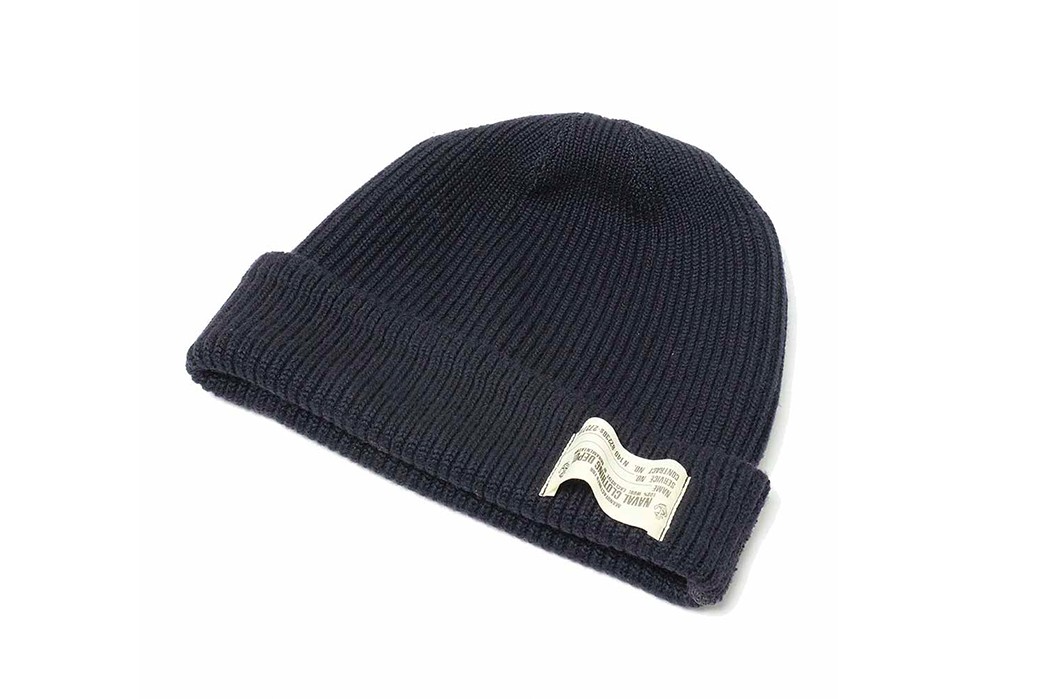
When it comes to military and naval repro, Buzz Rickson’s is one of the best brands out there. The Japanese label sits under Toyo Enterprise and has a penchant for U.S.N. reproductions, with the BR02243 Watch Cap being a solid example. Its made in Japan from 100% wool and comes fitted with a charming Naval Clothing Depot tag. If you want to mill around your local coffee shop like an off-duty deckhand, Buzz lets you do so in a perfect repro that’s also available in cotton.
Available from HINOYA for $59.
Knickerbocker Mfg. Co. Watch Cap
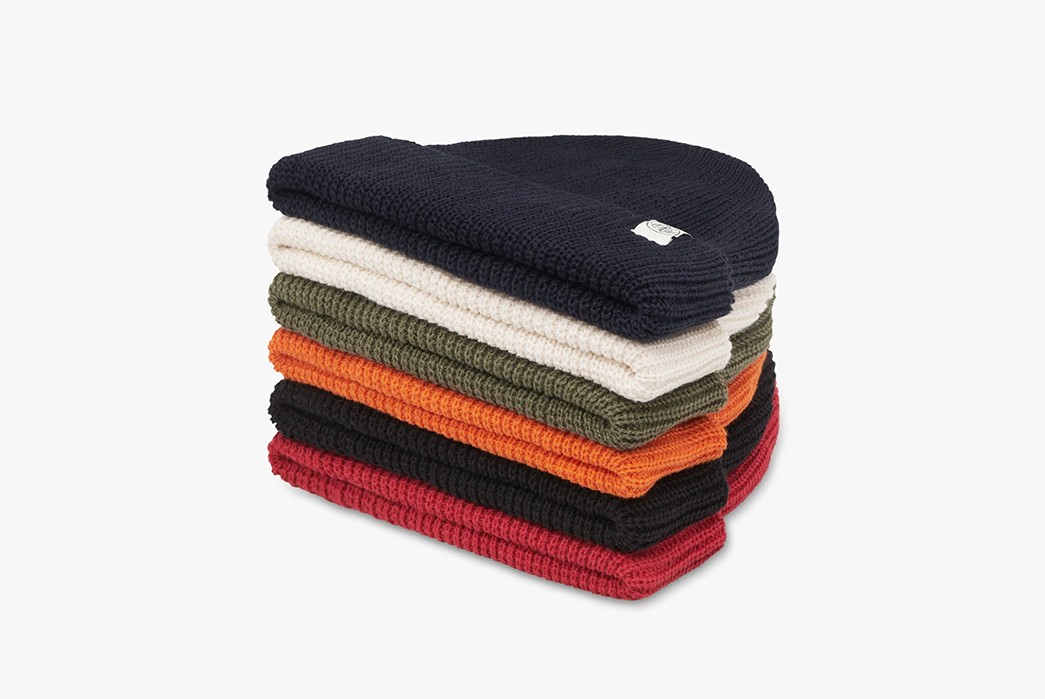
If your dome prefers cotton, there’s no better place to look than Knickerbocker. This New York-based label has made this watch cap to spec in USA for nearly a decade now (editor David has held onto his for 8 years) and it comes in a whole host of colors, including the above blaze orange.
Available for $50 from Knickerbocker.
Merz b. Schwanen Merino Wool Watch Cap
A short hop across the pond to German knitwear masters, Merz b. Schwanen reveals their 100% merino wool watch cap. This beanie is ribbed and knit in Portugal from certified mulesing-free fibersand also comes in a rainbow of colors.
Available for $55 from Franklin & Poe.
MA20106 U.S. Navy Watch Cap (Modify) Navy
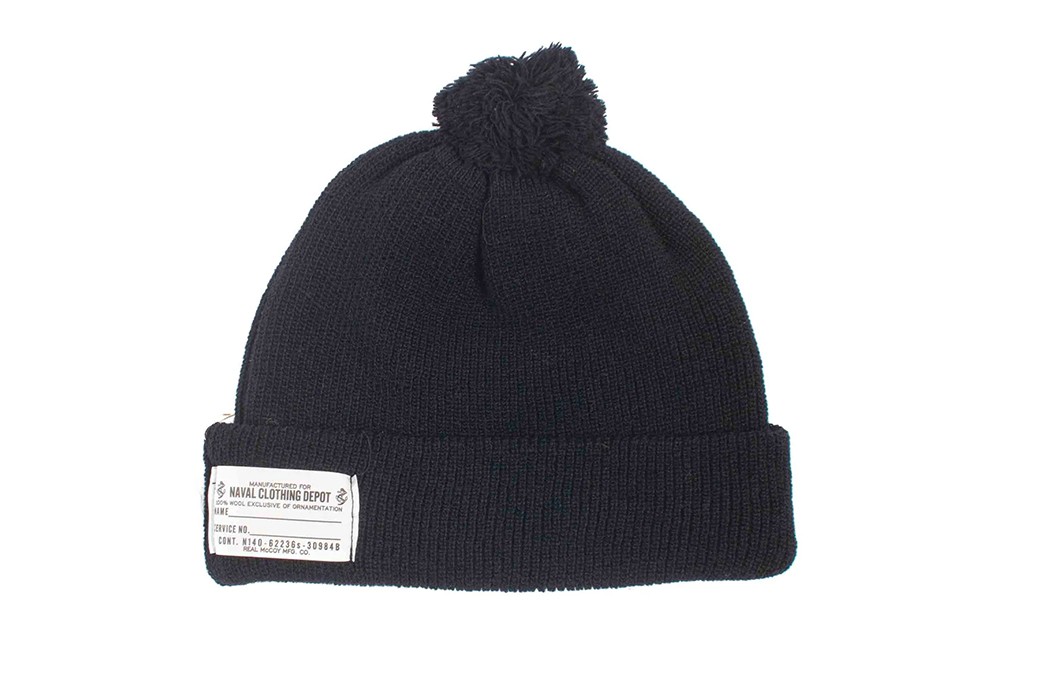
The Real McCoy’s 100% wool Watch Cap cap is apparently one of the brand’s most requested items, but they also make a bobbled MA20106 U.S. Navy Watch Cap (Modify) Navy. It’s knit in Japan from navy wool and is authentic to surplus watch caps that were modified by civilians and returning Naval personnel.
Available for $102 from Lost & Found.

